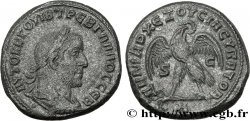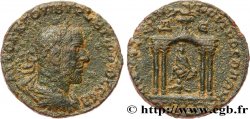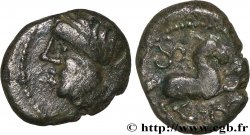You must signin and be an approved bidder to bid, LOGIN TO BID. Accounts are subject to approval and the approval process takes place within 48 hours. Do not wait until the day a sale closes to register. Clicking on "BID" constitutes acceptance of the terms of use of cgb.fr private live auctions.
Bids must be placed in whole Euro amounts only. The sale will start closing at the time stated on the item description; any bids received at the site after the closing time will not be executed. Transmission times may vary and bids could be rejected if you wait until the last second. For further information check the Live auction FAQ
All winning bids are subject to a 18% buyer’s fee.
All winning bids are subject to a 18% buyer’s fee.
| Estimate : | 280 € |
| Price : | 175 € |
| Maximum bid : | 205 € |
| End of the sale : | 28 January 2020 15:11:11 |
| bidders : | 1 bidder |
Type : Tétradrachme syro-phénicien
Date: 251
Mint name / Town : Antioche, Syrie, Séleucie et Piérie
Metal : billon
Diameter : 26 mm
Orientation dies : 1 h.
Weight : 12,03 g.
Coments on the condition:
Exemplaire bien centré des deux côtés. La monnaie a conservé une partie de son brillant de frappe et de son coupant d’origine. Très bel aigle au revers. Patine grise
Catalogue references :
Obverse
Obverse description : Buste lauré, drapé et cuirassé de Trébonien Galle à droite, vu de trois quarts en arrière (A*2), deux globules sous le buste.
Obverse legend : AUTOK K G OUIB TREB GALLOS SEB
Obverse translation : (Imperator Cæsar Caius Vibius Trebonianus Gallus Augustus).
Reverse
Reverse legend : S C À L’EXERGUE.
Reverse description : Aigle debout à gauche sur une ligne de terre, les ailes déployées, tête et queue à droite, tenant une couronne feuillée dans son bec, lettre d’officine entre les pattes.
Reverse legend : DHMARC EX OUSIAS / B
Reverse translation : (Revêtu de la puissance tribunitienne / avec l’accord du Sénat d’Antioche).
Commentary
Les frappes de Trébonien Galle et de Volusien signent la fin de la série des tétradrachmes syro-phéniciens, si l’on ne tient pas compte du sursaut d’Uranius Antoninus. Dans la base TSP maintenue par Michel Prieur, vingt-sept exemplaires sont maintenant répertoriés pour ce type.







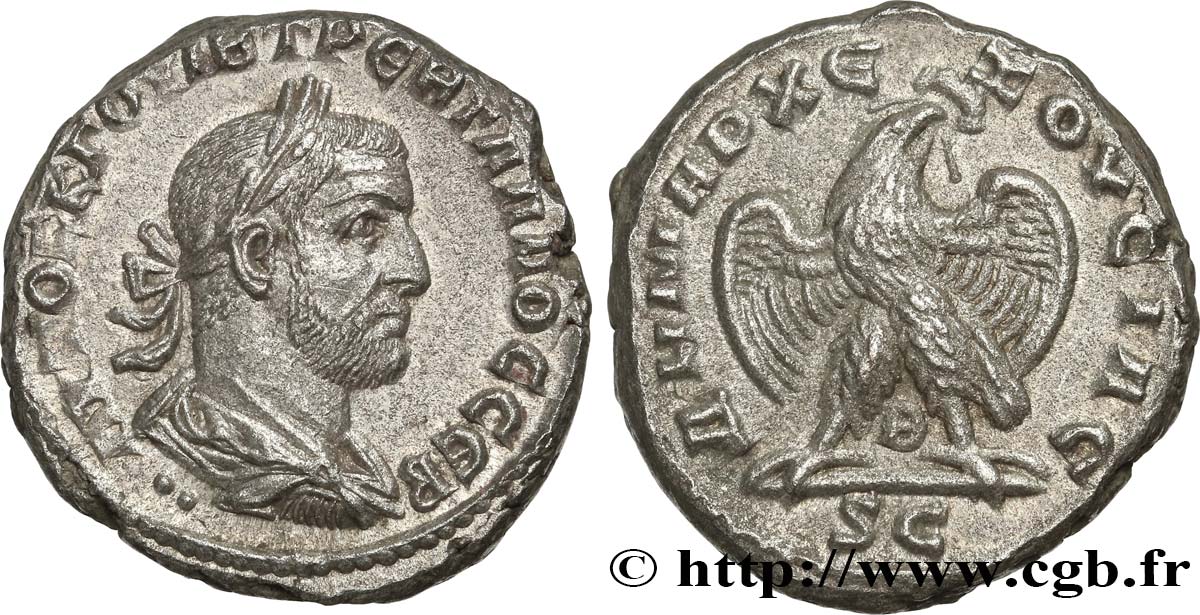
 Report a mistake
Report a mistake Print the page
Print the page Share my selection
Share my selection Ask a question
Ask a question Consign / sell
Consign / sell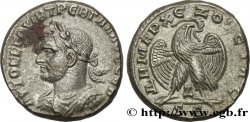
 Full data
Full data